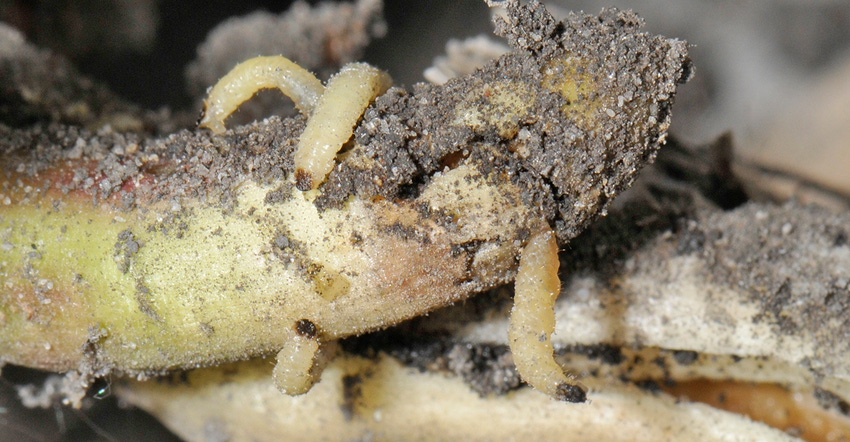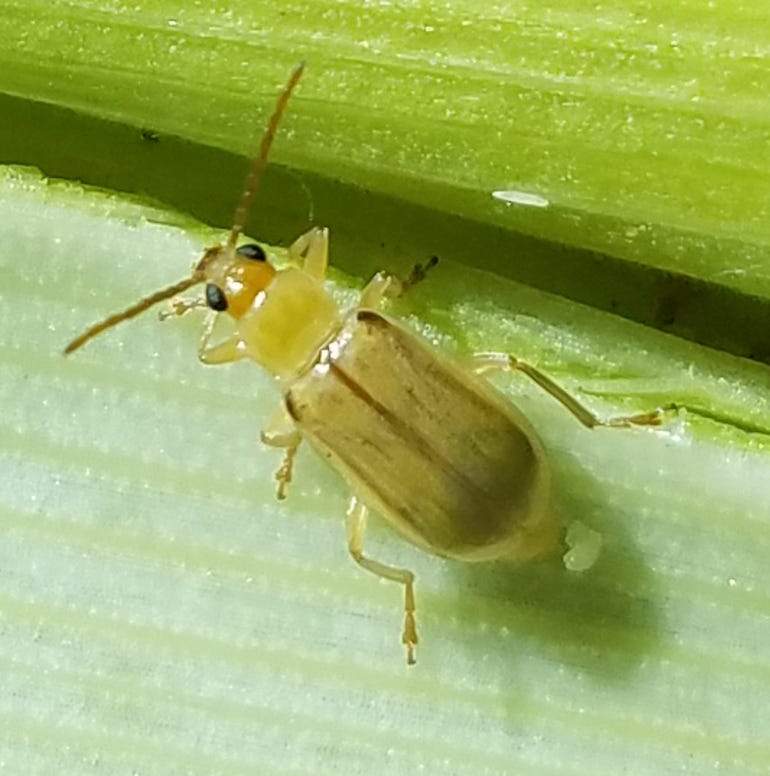
Scientists have found northern corn rootworms in North Dakota that are resistant to Bt corn hybrids expressing the Cry3Bb1 (Yieldgard Rootworm) and Cry34/35Ab1 (Herculex CRW) proteins.
It’s the first finding of such resistance in northern corn rootworms in the U.S., according to Janet Knodel, North Dakota State University Extension entomologist.
Previously, only western corn rootworm exhibited resistance to Bt corn hybrids.
“This is pretty significant,” she says. “Some people may have thought we didn’t have to worry about resistance developing the Northern Plains. But it is here now.”
Last year, NDSU researchers collected adult northern corn rootworms from five fields in Cass, Sargent and Ransom counties and tested the insects in the lab for resistance to the Bt-proteins.
Populations of northern corn rootworms from all the counties were found to have resistance to Bt hybrids expressing the Cry34/35Ab1 protein.
The northern corn rootworm population from the field near Arthur in Cass County was also tolerant to the Cry3Bb1 protein, which indicates that resistance to Cry3Bb1 could eventually develop or occur in other parts of the Northern Plains, Knodel says.
No cross-resistance was evident between the Cry3Bb1 and Cry34/35Ab1 proteins in the populations tested.
In addition, western corn rootworm adults collected from Ransom county showed resistance to Bt corn hybrids expressing the Cry3Bb1 protein. No western corn rootworm populations were observed at the other locations. The low density of western corn rootworm was probably due to the cold winter of 2013-2014 that may have caused significant egg mortality, Knodel says.
 ADULT ROOTWORM: Adult northern corn rootworm can be found in midsummer on corn leaves.
ADULT ROOTWORM: Adult northern corn rootworm can be found in midsummer on corn leaves.

Increased survival of northern corn rootworm and western corn root to Bt pyramided (Cry3Bb1 + Cry34/35Ab1 or SmartStax) corn was also observed in some populations, Knodel says.
The reduced susceptibility of both corn rootworm species to the Bt pyramid corn could be attributed to increased tolerance of these populations to Cry3Bb1 and/or Cry34/35Ab1 proteins. However, not all corn rootworm populations tested were resistant and some were still susceptible to Bt corn expressing either or both Cry34/35Ab1 and Cry3Bb1 proteins in North Dakota
This research was recently published in the 2019 Journal of Economic Entomology, a peer-reviewed journal. The abstract is available online.
What it means
The presence of Bt-resistant northern corn rootworm in the U.S. will require changes in corn management to limit future yield losses, Knodel says. Soil-applied insecticides may have to once again be used to control northern corn rootworm.
Scout corn fields closely this summer for adult northern corn rootworms, Knodel suggest. If you see high numbers, begin making plans on how to change your management to protect the potential of the 2020 crop. The NDSU Extension Service will be focusing on northern corn rootworm control recommendations at meetings this fall and winter. For more information, consult the NDSU Extension publication E1852 Integrated Pest Management of Corn Rootworms in North Dakota.
The North Dakota Corn Utilization Council helped fund the corn rootworm research.
About the Author(s)
You May Also Like






